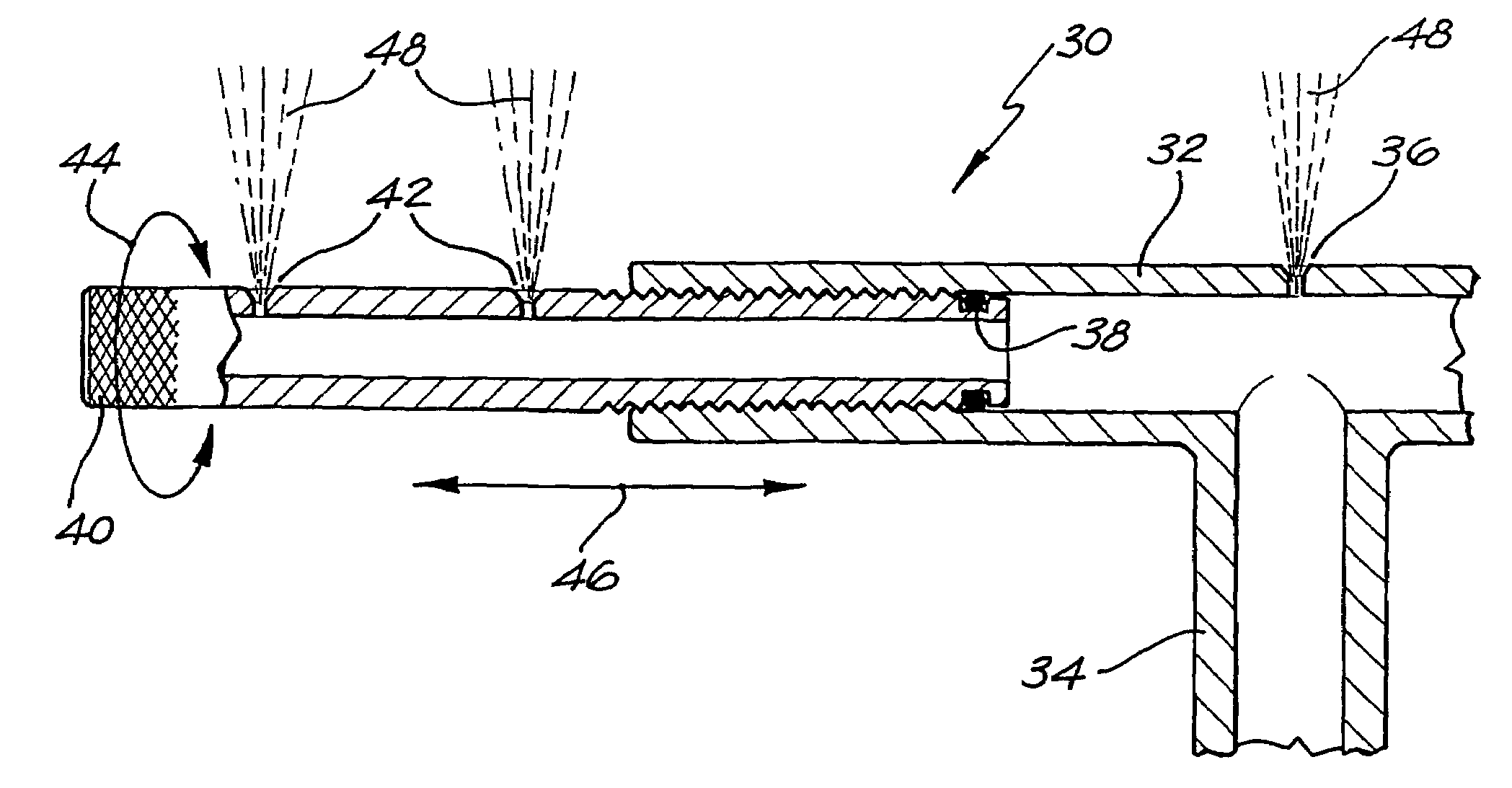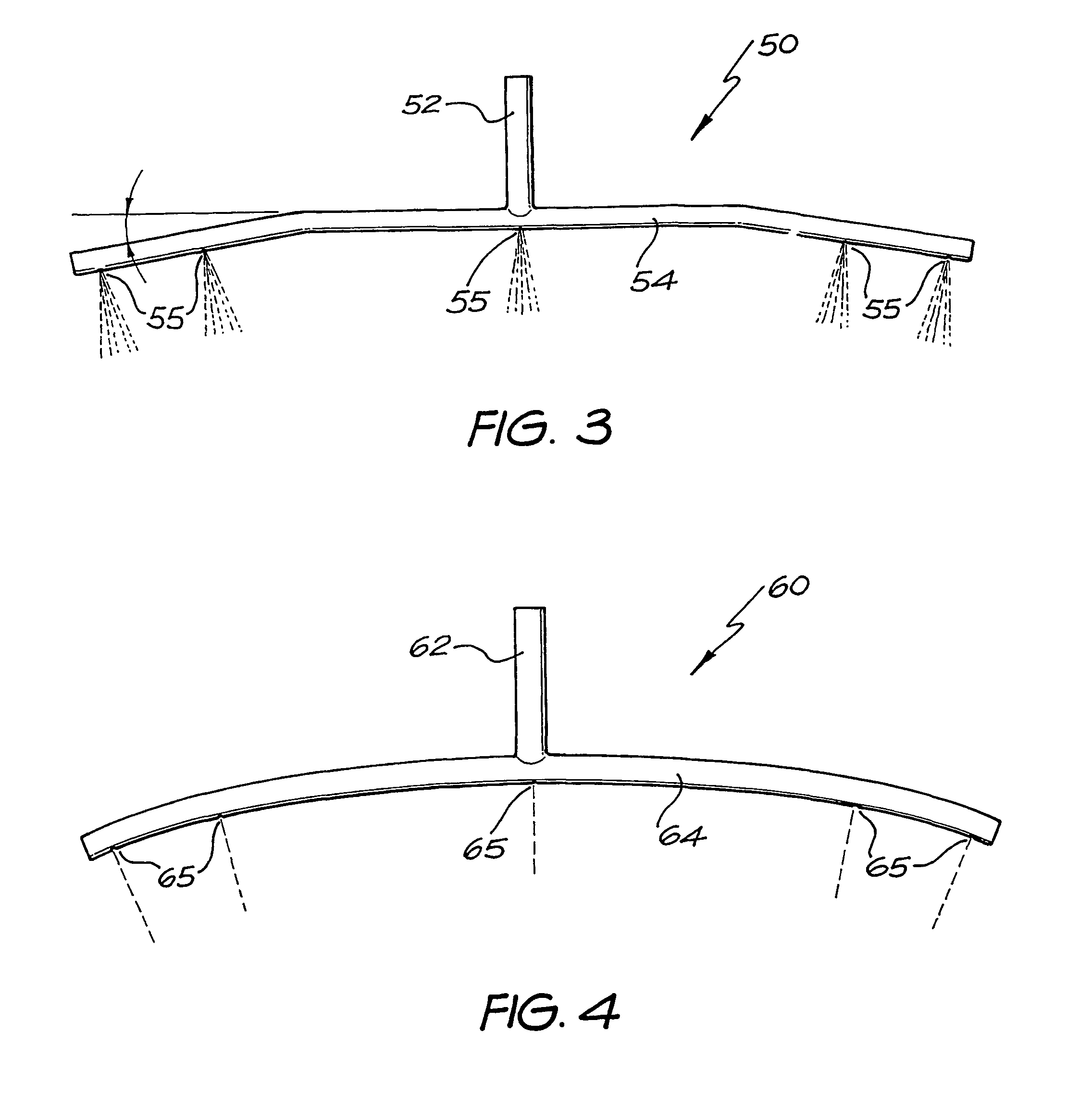Pour-on application method and devices
a technology of formulations and pourons, applied in the field of pesticidal ‘ pouron ’ formulations application methods, can solve the problems of formulations that migrate poorly from the application site, damage to wool and/or hides, serious consequences for the commercial viability of such primary industries, etc., and achieve the effect of effective elimination of endoparasites, good migratory effect of formulations, and increased absorption or quantity of active migrating through the skin
- Summary
- Abstract
- Description
- Claims
- Application Information
AI Technical Summary
Benefits of technology
Problems solved by technology
Method used
Image
Examples
example 1
[0094]Objectives: To determine the effect of application band width and stocking density on spinosad pour-on efficacy for control of lice in sheep immediately off-shears.
[0095]Treatments: All sheep were treated with spinosad at 16 mg / sheep (equivalent to 0.4 mg / kg live weight). This dose was chosen at approximately 1 / 20 of the fill efficacious dose to allow discrimination between treatments. Treatments were applied using either a band width of 30 mm or 180 mm. Sheep were kept in pens either alone or in groups of 6. Lice counts were made on days 0, 14, 28, 42 and 56 days after treatment.
[0096]Design: Four (4) treatment groups of sheep were used in this trial comprising the 2×2 factorial combinations of a route of application factor (backline (B) or backline plus flank (BF)) and a grouping factor (grouped in pens of 6 sheep (G) or single pens (S)). There were 2 group pens and 6 single pens for each of the B and BF treatments, so twice as many sheep in groups as in single pens. There w...
example 2
[0101]Objectives: To compare the amount and rate of diffusion of 14C labelled zeta-cypermethrin from the dorsal midline of sheep when applied in a conventional formulation and a range of test excipients.
[0102]
Animal Description:Animal:SheepBreed / Strain:MerinoSex:Castrate male or femaleDescription:5 months plus wool, all of the same genetic line,plain bodiedHistory:No synthetic pyrethroid treatment in the previous 3 months.A solid vaccination history is essential. Internal parasitesmust be controlled.Age:MatureWeight:Less than 50 kg
Study Design and Animal Allotment
[0103]Treatments: 10 mg / ml zeta-cypermethrin spiked with 100 μCi zeta-cypermethrin labelled with 14C in an emulsifiable concentrate, Greenfield solvent based pour-on formulations 1, 2 and 3 (groups 1,2,3,4 in “drug formulations”).
[0104]Design: 3 sheep per treatment group, 4 groups=12 sheep. Sheep were randomly to allocated to each treatment group.
Trial Facilities
[0105]Animals were acclimatised to the diet and housed in meta...
PUM
 Login to View More
Login to View More Abstract
Description
Claims
Application Information
 Login to View More
Login to View More - R&D
- Intellectual Property
- Life Sciences
- Materials
- Tech Scout
- Unparalleled Data Quality
- Higher Quality Content
- 60% Fewer Hallucinations
Browse by: Latest US Patents, China's latest patents, Technical Efficacy Thesaurus, Application Domain, Technology Topic, Popular Technical Reports.
© 2025 PatSnap. All rights reserved.Legal|Privacy policy|Modern Slavery Act Transparency Statement|Sitemap|About US| Contact US: help@patsnap.com



